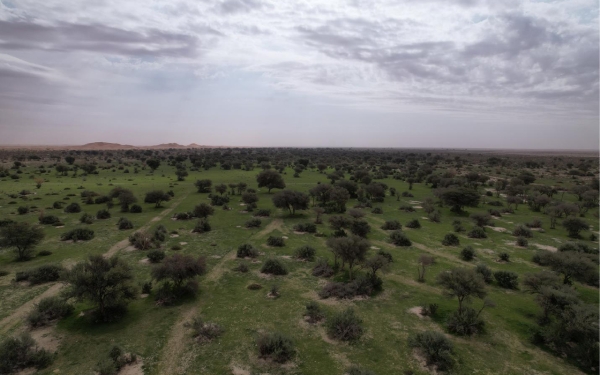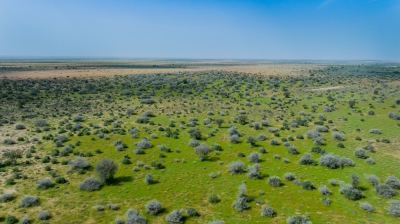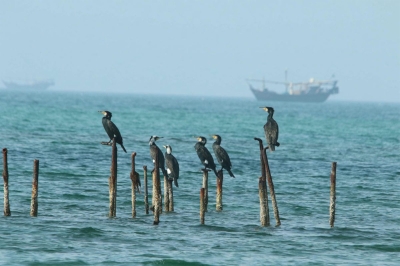

Imam Abdulaziz bin Mohammed Royal Reserve is one of the royal reserves in the Kingdom of Saudi Arabia. It is located in the northeastern part of Riyadh Province, approximately 100 km from Riyadh. In 2018, a royal decree was issued to convert Rawdat Khuraim Reserve and its surrounding areas into a royal reserve under Imam Abdulaziz bin Mohammed Royal Reserve.
Area of Imam Abdulaziz bin Mohammed Royal Reserve
The reserve extends over an area of about 11,300 km², which is equivalent to 0.5 percent of the kingdom's total area. It is managed by the Council of Royal Reserves, headed by Crown Prince Mohammed bin Salman bin Abdulaziz.
Sections of Imam Abdulaziz bin Mohammed Royal Reserve
Rawdat Khuraim, which is now part of Imam Abdulaziz bin Mohammed Royal Reserve, is known for its greenery and watercourses. The reserve boasts several wadis, including Shuaib al-Touki, and valleys such as Khawish, Thilan, and Thumamah.
Wildlife at Imam Abdulaziz bin Mohammed Royal Reserve
The Imam Abdulaziz bin Muhammad Reserve contains different wildlife animals, such as deer, red-necked ostrich, and the Arabian Oryx. It also has distinctive types of endemic and migratory birds, such as steppe eagles. The Reserve serves as a safe resort for several rare species of wildlife.
Imam Abdulaziz bin Mohammed Royal Reserve Development Authority
As part of Saudi Arabia's commitment to achieving environmental sustainability, a royal decree was issued in 2018 to establish the Council of Royal Reserves, headed by Crown Prince Mohammed bin Salman. Authorities were established to manage these reserves, including the Imam Abdulaziz bin Mohammed Royal Reserve Development Authority, led by Prince Turki bin Mohammed bin Fahd bin Abdulaziz al Saud. The authority has regulatory oversight over Imam Abdulaziz bin Mohammed Royal Reserve and King Khalid Royal Reserve.
Sites of Imam Abdulaziz bin Mohammed Royal Reserve in the Antiquities Record
In 2022, Imam Abdulaziz bin Mohammed Royal Reserve Development Authority signed a memorandum of understanding with the Heritage Commission to serve common goals related to preserving, rehabilitating, and protecting archaeological sites. This includes research, surveys, and archaeological excavations, as well as the rehabilitation, protection, and registration of archaeological sites within the reserve in the national heritage registry.
Related quizzes
Related articles

